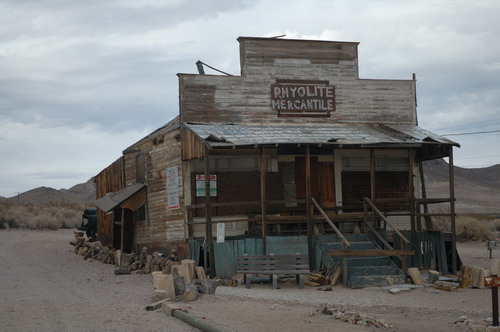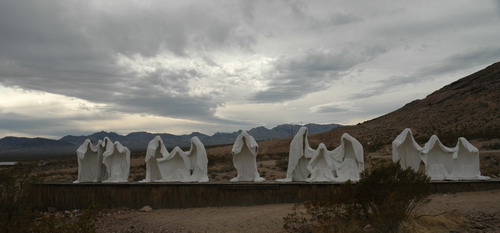
February
2007
| |
| HOME |
| About Tenaya |
| About Us |
| Latest Update |
| Logs from Current Year |
| Logs from Previous Years |
| Katie's View |
| Route Map |
| Links |
| Contact Us |
| Latest News |
February 2007
|
The Valley of Fire
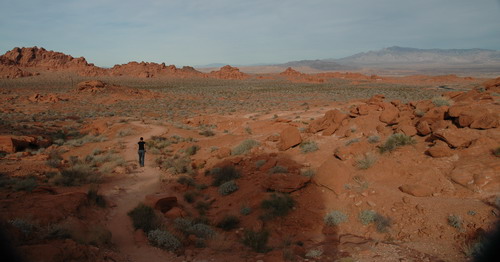
The Valley of Fire is located in Southern Nevada not far from Las Vegas and derives its name from the red sandstone formations.
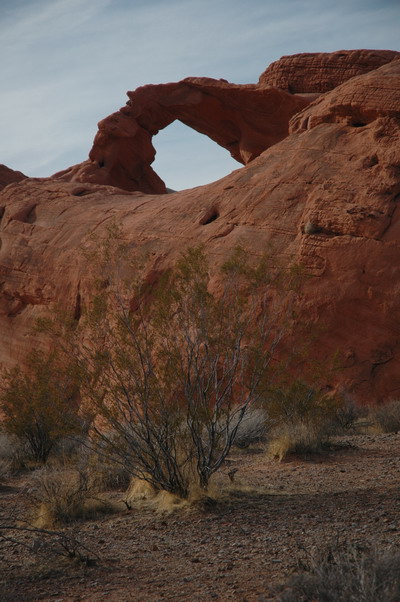
Arch Rock
The annual rainfall is 4 inches (10 cm) but that's enough for creosote bush, burro bush and brittlebrush and several cactus species, including beaver tail and cholla to flourish.
Albert Szukalski
Antwerp Artist
4 April, 1945 - 25 January, 2000
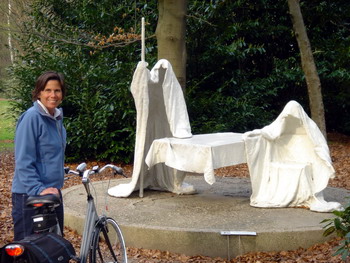
Katie is fond of a number of sculptures in Antwerp, but her favorites are by an Antwerp artist, Albert Szukalski. He is well known in Belgium as the sculptor of “ghosts”. When she learned that he had travelled to the Nevada desert and created another Last Supper, and it was intact, of course we had to find it.
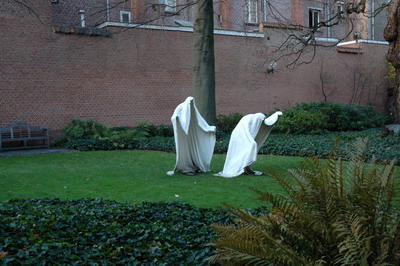
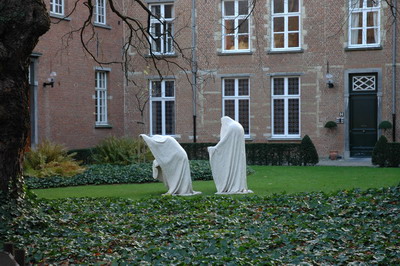
These two Ghosts were near our apartment in Antwerp and we often stopped to look at them.
The Last Supper
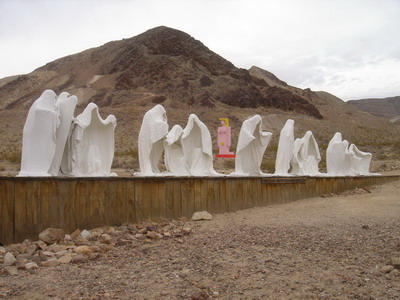
Albert Szukalski came to the Nevada desert in 1984 to create what is perhaps the most unique piece of his career. Originally designed to endure a mere two years, “The Last Supper” sculpture has not only stood the test of time, but has lived on to become the “genesis” piece of the Goldwell Open Air Museum.
Albert was attracted to the Mojave Desert for many reasons, not the least of which was the Mojave’s resemblance to the deserts of the Middle East. To construct a modern day representation of Christ’s Last Supper, especially so close to Death Valley (where he originally wanted it sited), is eerily appropriate. Working essentially from Leonardo Da Vinci’s fresco of the Last Supper within the desert environment, Szukalski succeeded in blending the two disparate elements into a unified whole. Maintaining the staging of the figures in Leonardo’s work and placing it in the American Southwest allowed the artist to meld Western Artistic tradition with the vast landscape of the New World. Albert Szukalski followed up “The Last Supper” with two other pieces at the site, “Ghost Rider” in 1984 and “Desert Flower” in 1989.
The above is from the Goldwell Museum website
Rhyolite, Nevada
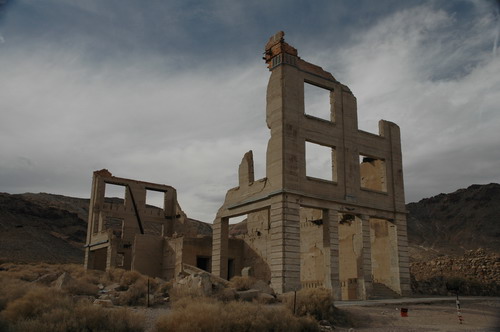
Shorty Harris and Ed Cross found Gold just outside Death Valley, California. Many small mining towns started in the area, but Rhyolite became the "Queen of the Desert"
Rhyolite was a booming town of 10,000. The town was founded in 1904 and by 1907 even had electricity. The town had 3 water systems, 3 train lines, telephones, electricity, over 50 mines, 3 newspapers, 2 undertakers, 2 hospitals, 8 physicians, 19 lodging houses, 18 grocery stores, over 50 saloons, a Catholic and a Presbyterian church. The financial panic of 1907 took its toll on the town and businesses started to shut down. Then, the mines started to play out and by 1916 the power and light company had shut down and the people had moved on.
Learn more about Rhyolite, Nevada USA
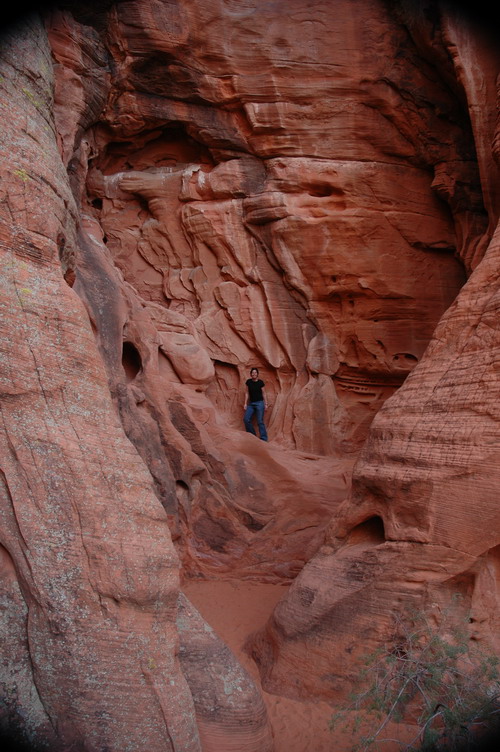
During February the weather was near perfect. In the summer temperatures reach 120 degree F (50 degrees C)
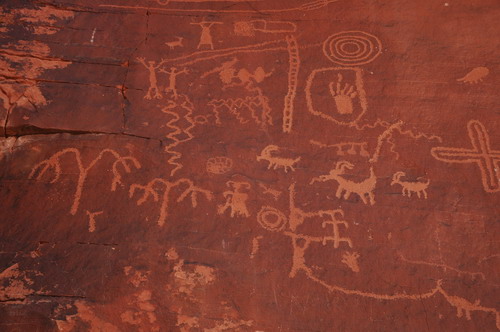
The Valley of Fire was home to different prehistoric people including the Anasazi and was occupied from 300 BC to 1150 AD. Fine examples of rock art left by these ancient peoples can be found at several sites.
The Goldwell Open Air Museum
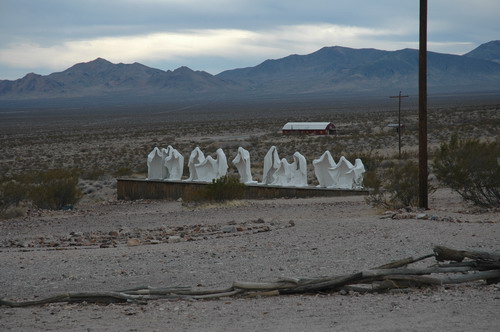
The Last Supper, by Belgian artist Albert Szukalski, which is a ghostly interpretation of Christ and his disciples sited against the backdrop of the expansive Amargosa Valley.
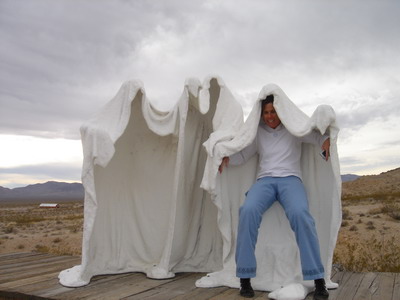
To make the life-size ghost figures, Szukalski wrapped live models in fabric soaked in wet plaster and posed them as in the painting "The Last Supper" by Leonardo Da Vinci. When the plaster set, the model was slipped out, leaving the rigid shroud that surrounded him. With more refining, Szukalski then coated the figures with fiberglass making them impervious to weather.
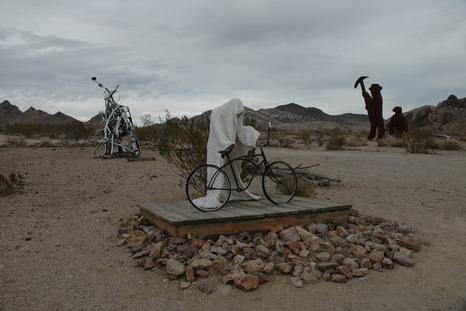
The Ghost Rider 1984
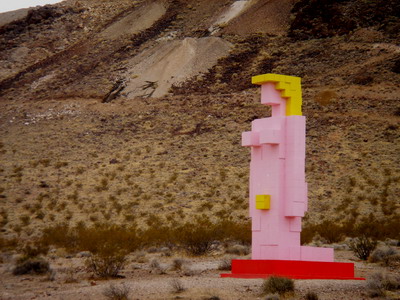
Lady Desert: The Venus of Nevada 1992
Dr. Hugo Heyman (Born 1942, Antwerp, Belgium)
“Art helps the re-experiencing of forgotten things,” says Belgian artist Dr. Hugo, creator of “Lady Desert.” Using cinderblocks to represent in real 3-D sculpture the pixels he uses in his virtual 2-D computer work, Dr. Hugo has created a sculpture which at once refers back to classical Greek sculpture while maintaining a firm presence in the highly technological/pixilated world of the 21st century.
From the website Dr. Hugo Heyman
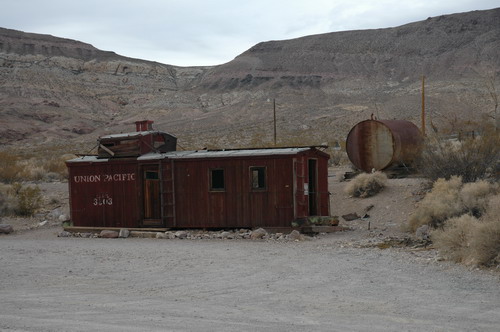
.
